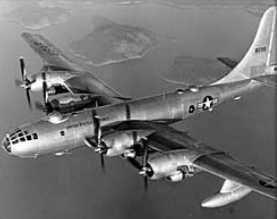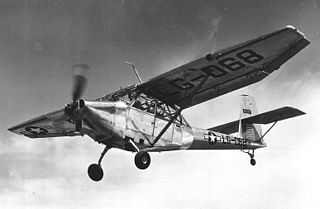Related Research Articles
The escort carrier or escort aircraft carrier, also called a "jeep carrier" or "baby flattop" in the United States Navy (USN) or "Woolworth Carrier" by the Royal Navy, was a small and slow type of aircraft carrier used by the Royal Navy, the United States Navy, the Imperial Japanese Navy and Imperial Japanese Army Air Force in World War II. They were typically half the length and a third the displacement of larger fleet carriers. While they were slower, carried fewer planes and were less well armed and armored, escort carriers were cheaper and could be built quickly, which was their principal advantage. Escort carriers could be completed in greater numbers as a stop-gap when fleet carriers were scarce. However, the lack of protection made escort carriers particularly vulnerable and several were sunk with great loss of life. The light carrier was a similar concept to escort carriers in most respects, but were capable of higher speeds to allow operation alongside fleet carriers.

The Vickers Wellington is a British twin-engined, long-range medium bomber. It was designed during the mid-1930s at Brooklands in Weybridge, Surrey, led by Vickers-Armstrongs' chief designer Rex Pierson; a key feature of the aircraft is its geodetic airframe fuselage structure, which was principally designed by Barnes Wallis. Development had been started in response to Air Ministry Specification B.9/32, which was issued in the middle of 1932. This specification called for a twin-engined day bomber capable of delivering higher performance than any previous design. Other aircraft developed to the same specification include the Armstrong Whitworth Whitley and the Handley Page Hampden. During the development process, performance requirements such as for the tare weight changed substantially, and the engine used was not the one originally intended.

The Douglas DC-3 is a fixed-wing propeller-driven airliner that revolutionized air transport in the 1930s and 1940s. Its lasting effect on the airline industry and World War II makes it one of the most significant transport aircraft ever produced. It has a cruise speed of 207 mph (333 km/h), capacity of 21 to 32 passengers or 6,000 lbs of cargo and a range of 1,500 mi (2,400 km).

The Grumman S-2 Tracker was the first purpose-built, single airframe anti-submarine warfare (ASW) aircraft to enter service with the United States Navy. Designed and initially built by Grumman, the Tracker was of conventional design — propeller-driven with twin radial engines, a high wing that could be folded for storage on aircraft carriers, and tricycle undercarriage. The type was exported to a number of navies around the world. Introduced in 1952, the Tracker and its E-1 Tracer derivative saw service in the U.S. Navy until the mid-1970s, and its C-1 Trader derivative until the mid-1980s, with a few aircraft remaining in service with other air arms into the 21st century. Argentina and Brazil are the last countries to still use the Tracker.

The Grumman TBF Avenger is an American torpedo bomber developed initially for the United States Navy and Marine Corps, and eventually used by several air and naval aviation services around the world.

The Boeing B-50 Superfortress is an American strategic bomber. A post–World War II revision of the Boeing B-29 Superfortress, it was fitted with more powerful Pratt & Whitney R-4360 radial engines, stronger structure, a taller tail fin, and other improvements. It was the last piston-engined bomber built by Boeing for the United States Air Force, and was further refined into Boeing's final such design, the B-54. Not as well known as its direct predecessor, the B-50 was in USAF service for nearly 20 years.

A trainer is a class of aircraft designed specifically to facilitate flight training of pilots and aircrews. The use of a dedicated trainer aircraft with additional safety features—such as tandem flight controls, forgiving flight characteristics and a simplified cockpit arrangement—allows pilots-in-training to safely advance their real-time piloting, navigation and warfighting skills without the danger of overextending their abilities alone in a fully featured aircraft.
An operational conversion unit (OCU) is a unit within an air force whose role is to support preparation for the operational missions of a specific aircraft type by providing trained personnel. Operational conversion units teach pilots how to fly an aircraft and which tactics best exploit the performance of their aircraft and its weapons. The Royal Air Force and Royal Australian Air Force, among others, practise this method of training. The United States Navy calls its units in this role fleet replacement squadrons.
Marshall Aerospace and Defence Group is an aircraft maintenance, modification and design company located at Cambridge Airport, which it also owns and operates. The company covers all aspects of design, manufacture, maintenance, modification, conversion and logistic support of military, commercial and business aircraft. It employs over 4,400 people and is based on an 800-acre (3.2 km2) site with 1,200,000 square feet (110,000 m2) of covered hangar space. It works on a large variety of aircraft types and projects.

The Stinson L-13 was a US military utility aircraft first flown in 1945. Developed when Stinson was a subsidiary of Consolidated Vultee, rights to it were not included in the 1948 sale of Stinson to Piper. Mass production was therefore undertaken by Convair, which built some 300 of them.

A cargo aircraft is a fixed-wing aircraft that is designed or converted for the carriage of cargo rather than passengers. Such aircraft usually do not incorporate passenger amenities and generally feature one or more large doors for loading cargo. Freighters may be operated by civil passenger or cargo airlines, by private individuals or by the armed forces of individual countries.
A radar picket is a radar-equipped station, ship, submarine, aircraft, or vehicle used to increase the radar detection range around a force to protect it from surprise attack, typically air attack. Radar picket vessels may also be equipped to direct friendly fighters to intercept the enemy. In British terminology the radar picket function is called aircraft direction. Often several detached radar units encircle a force to provide increased cover in all directions. Airborne radar pickets are generally referred to as airborne early warning.

The Convair CV-240 is an American airliner that Convair manufactured from 1947 to 1954, initially as a possible replacement for the ubiquitous Douglas DC-3. Featuring a more modern design with cabin pressurization, the 240 series made some inroads as a commercial airliner, and had a long development cycle that produced various civil and military variants. Though reduced in numbers by attrition, various forms of the "Convairliners" continue to fly in the 21st century.
No. 623 Squadron RAF was a heavy bomber squadron of the Royal Air Force during the Second World War.

Ryūhō was a light aircraft carrier of the Imperial Japanese Navy. She was converted from the submarine tender Taigei, which had been used in the Second Sino-Japanese War. One of the least successful of the light aircraft carrier conversions due to its small size, slow speed and weak construction, during World War II, Ryūhō was used primarily as an aircraft transport and for training purposes, although she was also involved in a number of combat missions, including the First Battle of the Philippine Sea.

The Sangamon class were a group of four escort aircraft carriers of the United States Navy that served during World War II.

Sparviero was an Italian aircraft carrier designed and built during World War II. She was originally the ocean liner MS Augustus. The conversion was started in 1942 and was almost completed, but the ship was never delivered to the Regia Marina. She began to be scrapped in 1946, a process completed by 1952.
References
- Gunston, Bill (1993). World Encyclopedia of Aircraft Manufacturers. Annapolis: Naval Institute Press. p. 23.